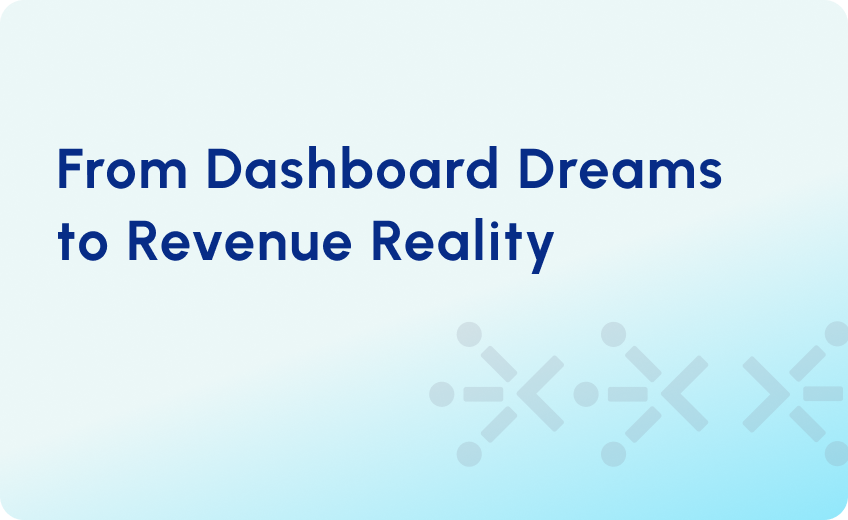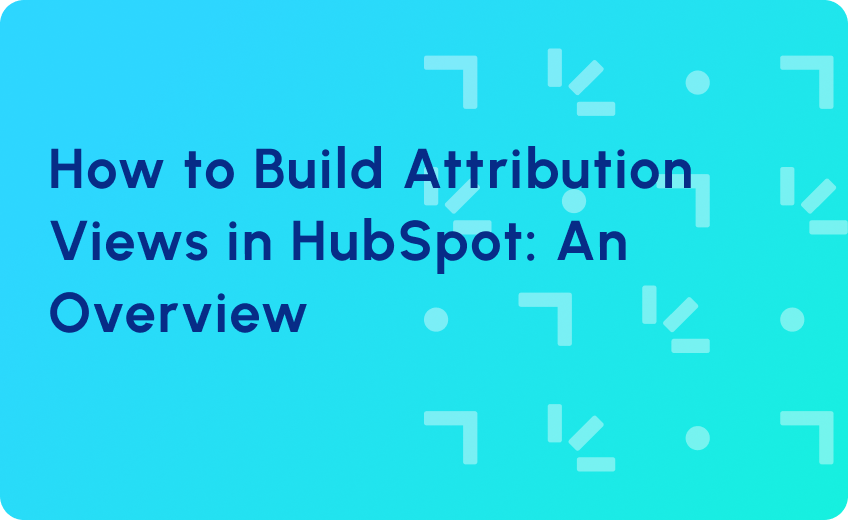
Lifecycle-Driven Attribution: Connecting Engagement to Revenue
Imagine a prospect who first starts following your company updates on LinkedIn, signs up for the newsletter, and later becomes an MQL after attending an industry event, and also reads trusted third-party reviews on G2. How does attribution work here?
Traditional attribution gives credit to the first email or the final event interaction. Still, it misses the influence of content syndication, comparison tools, or ROI calculators that helped move the prospect through the funnel.
In today’s complex buyer journey, prospects rarely move in a linear journey. They engage with content, ads, emails, and events at various stages, often circling back multiple times before making a decision. Yet, many organizations still rely on legacy attribution models to understand what’s driving a healthy pipeline and revenue. This siloed view leaves teams guessing where to allocate budget, which campaigns accelerate funnel velocity, and how to align on lead quality.
Lifecycle-driven attribution is a methodology that connects engagement across every stage of the buyer’s journey to revenue outcomes. By focusing on how interactions influence progression through the lifecycle, this model offers the clarity and alignment that sales and marketing teams need to optimize pipeline velocity, improve forecasting, and make smarter budget allocations.
In this article, we’ll explore why traditional attribution falls short, how lifecycle-driven attribution bridges the gap, and what steps you can take to implement it within your own RevOps framework.
The Business Impact of Lifecycle-Driven Attribution
Lifecycle-driven attribution transforms how your revenue teams operate, align, and grow. It connects engagement data directly to lifecycle progression to help teams make smarter decisions and deliver tangible results across the funnel.
Here’s what your teams gain:
1. Accurate ROI Measurement for Marketing
Lifecycle-driven attribution enables marketing teams to quantify the true contribution of their initiatives beyond lead generation. By attributing pipeline creation and revenue to specific engagements across the entire buyer journey, leaders gain a comprehensive view of marketing effectiveness at every stage.
2. Enhanced Forecasting Across Lifecycle Stages
Understanding how leads move through each stage of your funnel enables more accurate pipeline forecasting. Whether it’s predicting MQL-to-Opportunity conversion rates or identifying bottlenecks, lifecycle-driven insights help you anticipate future revenue with greater precision.
3. Improved Pipeline Visibility for Marketing
Lifecycle-driven attribution gives marketing teams full visibility into how their efforts influence every stage of the funnel, from top-of-funnel engagement to bottom-of-funnel conversions. This ensures that marketing isn’t just generating leads, but actively contributing to pipeline progression and revenue growth.
4. Accelerated Velocity Across Stages
By pinpointing which engagements and assets move leads through the funnel fastest, lifecycle-driven attribution helps optimize buyer journeys and reduce sales cycle times. With visibility into stage-specific accelerators, your teams can double down on what works and keep deals flowing.
5. Enhanced Decision-Making for Sales & Marketing Teams
With clear insights into how engagement drives lifecycle progression, sales and marketing teams can align on what’s working, adjust strategies in real-time, and optimize for outcomes that matter. This fosters a collaborative, data-driven culture where decisions are based on shared metrics and common goals.
How to Implement Lifecycle-Driven Attribution
Shifting to a lifecycle-driven attribution framework requires a structured, phased approach. Here’s how to operationalize it effectively:
1. Establish Baseline Attribution Models
Start by implementing foundational first-touch and last-touch attribution models. These provide an initial layer of visibility and serve as a benchmark for understanding the earliest and latest interactions within the buyer journey.
2. Define and Operationalize Lifecycle Stages
Clearly define the lifecycle stages used across your funnel—Prospect, MQL, SQL, Opportunity, Customer, etc.—and ensure that all systems (CRM, MAP) recognize and treat these stages consistently.
3. Structure Engagement Tracking by Lifecycle Stage
Develop a data model that captures and stores engagement activities and source information at each lifecycle stage. This includes website visits, email engagement, event participation, third-party content interactions, and more. Structuring this data allows for precise attribution of which touchpoints are driving stage progression.
| For a deeper dive into lifecycle stage modeling, check our blog – The Problem with Traditional B2B Lifecycle Models (And What to Do Instead) |
4. Automate Attribution Logic Within Your CRM
Once the data model and lifecycle stages are in place, configure automation within Salesforce to assign attribution values at each lifecycle milestone. This may include workflows, custom fields, or integrations with attribution platforms to ensure attribution data is captured in real time and aligned to the correct stage.
Conclusion
Most attribution models only tell part of the story. They track who clicked first or last, but they miss the bigger question: what actually moved someone forward in the funnel?
Lifecycle-driven attribution fills that gap. It connects each touchpoint to a defined lifecycle stage—giving teams a clearer view of what’s working, what’s not, and where to focus.
For teams serious about aligning marketing with revenue outcomes, this model isn’t just nice-to-have—it’s essential.
At RevOps Global, we help companies implement this framework end-to-end—from lifecycle stage design to CRM automation and reporting.
Need help building attribution that reflects how your funnel really works? Book a 1:1 strategy session here!




